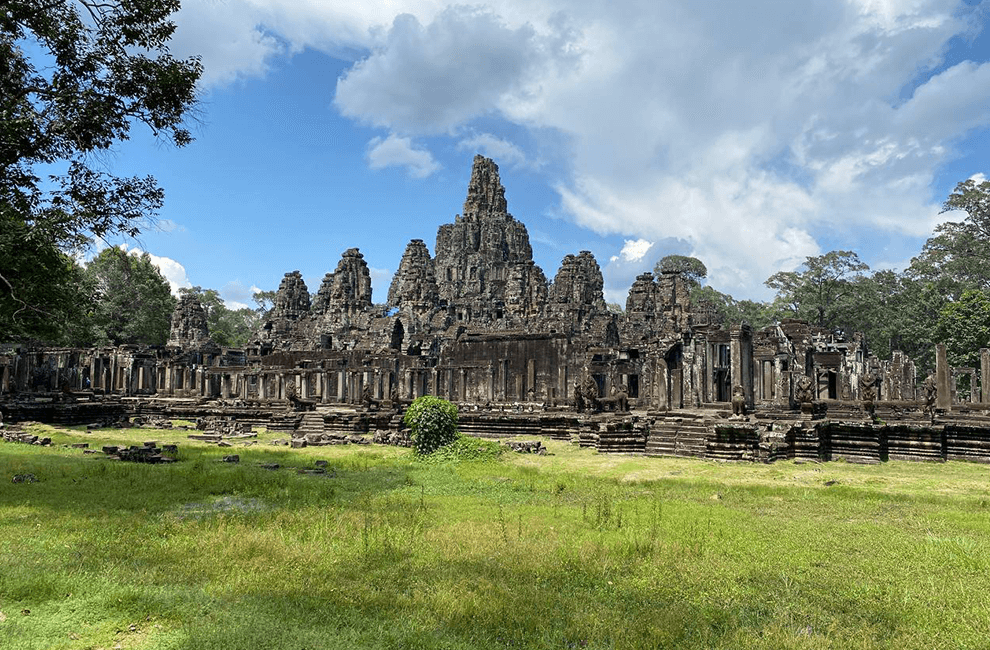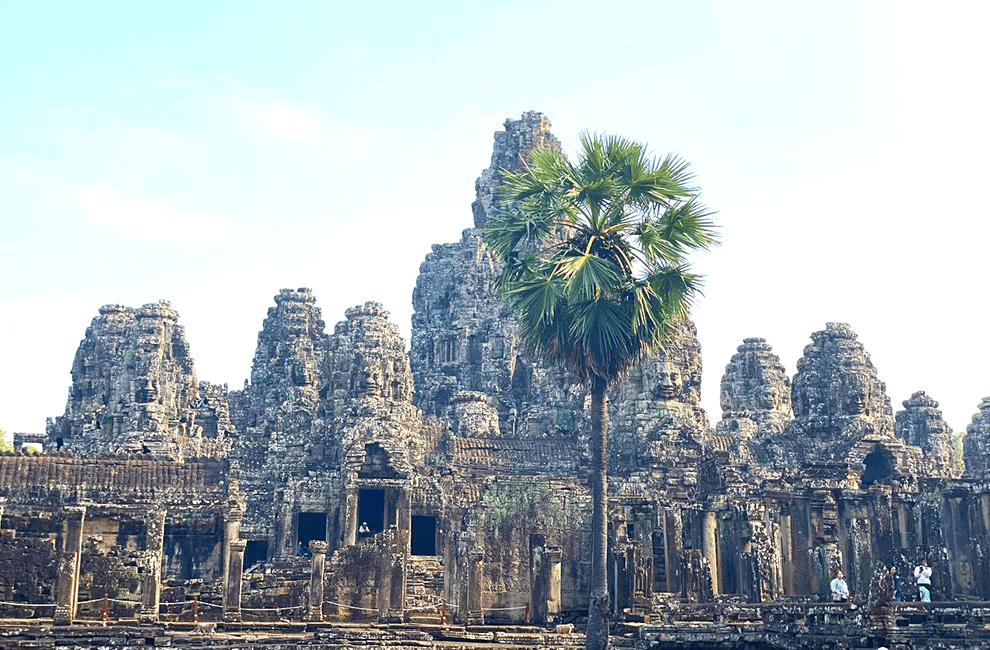If you are an avid traveler or history enthusiast, a visit Bayon Temple is an unmissable adventure that will transport you back in time to the ancient Khmer empire. Located in Siem Reap, Cambodia, this architectural marvel stands as a testament to the ingenuity and artistic prowess of the Khmer people. In this comprehensive travel guide, we will delve into the rich history of Bayon Temple and provide you with practical tips to make the most of your visit.
Visit Bayon Temple: An Architectural Masterpiece
The Spectacular Rise of the Khmer Empire
The Khmer Empire, once one of the most powerful civilizations in Southeast Asia, flourished between the 9th and 15th centuries. Under the rule of King Jayavarman VII, the empire reached its zenith, and the Bayon Temple emerged as one of the most significant structures of that era.
The Iconic Smiling Faces
Bayon Temple is renowned for its iconic stone faces that adorn the towers, each bearing a serene yet enigmatic smile. With their half-closed eyes and slightly upturned lips, these faces exude an aura of tranquility and mystique. It is believed that these faces are depictions of King Jayavarman VII himself, symbolizing his divine presence and benevolence.

Exploring the Enigmatic Complex
Architectural Highlights
Bayon Temple is characterized by its unique blend of Hindu and Buddhist architectural elements. As you wander through its labyrinthine corridors, you will marvel at the intricately carved bas-reliefs depicting scenes from mythology, daily life, and military conquests. The interplay of light and shadow across these ancient artworks creates an ethereal ambiance that is simply awe-inspiring.
Central Structure: The Bayon Temple
The centerpiece of the complex is the Bayon Temple, a towering structure adorned with over 200 faces. Ascend the steep staircases to explore the temple’s upper levels and enjoy panoramic views of the surrounding area. The inner sanctum houses a maze of chambers and corridors, each revealing hidden treasures waiting to be discovered.
Terrace of the Elephants
Adjacent to Bayon Temple is the Terrace of the Elephants, a grand platform adorned with intricate carvings of elephants and other mythical creatures. This expansive terrace served as a ceremonial space where the royal court would preside over grand processions and public ceremonies. Take a leisurely stroll along this ancient platform and imagine the opulence and grandeur of the Khmer Empire.
Practical Tips for Your Visit
Best Time to Visit
To fully appreciate the beauty of Bayon Temple, it is best to visit during the early morning hours or late afternoon when the sunlight bathes the temple in a warm golden glow. Avoid the midday heat when the temple can be crowded with tourists.
Dress Code and Etiquette
As Bayon Temple remains an active religious site, it is important to dress modestly and respectfully. Both men and women should cover their shoulders and knees.
Finding a Knowledgeable Guide
To fully comprehend the historical and cultural significance of Bayon Temple, consider hiring a knowledgeable guide who can provide insightful explanations and stories behind the intricate carvings. Their expertise will enhance your overall experience and allow you to appreciate the temple’s rich heritage.
Final Thoughts
Visiting Bayon Temple is not just a journey to appreciate ancient architecture and craftsmanship, but also an opportunity to connect with the spiritual and cultural essence of Cambodia. As you immerse yourself in the mystique of this captivating temple, you will gain a deeper understanding of the historical legacy of the Khmer empire. Embrace the enigmatic smiles of the stone faces and allow the ancient whispers of Bayon Temple to transport you to a bygone era filled with wonder and grandeur.
Experience the magic of Bayon Temple for yourself. Embark on an unforgettable adventure and unravel the secrets of this architectural masterpiece.





